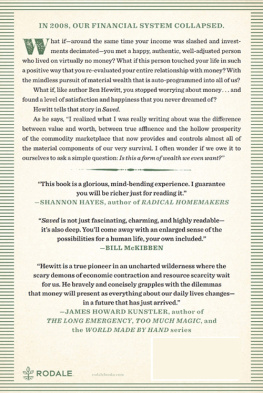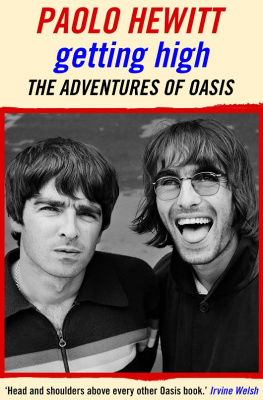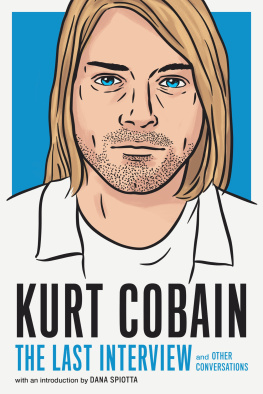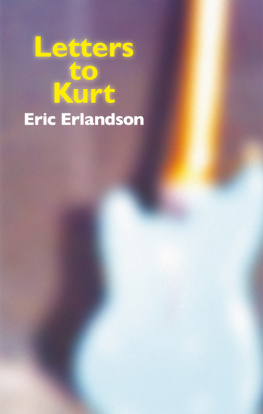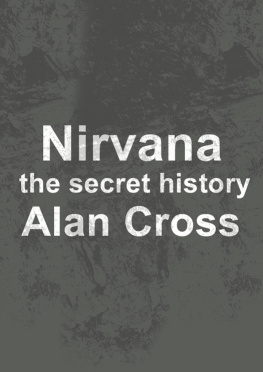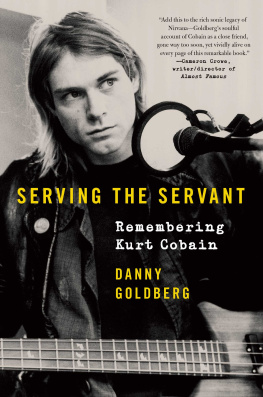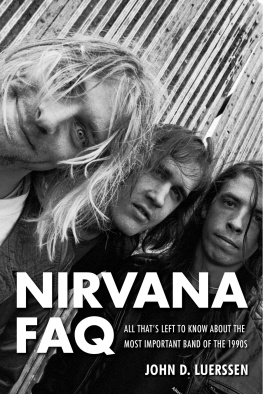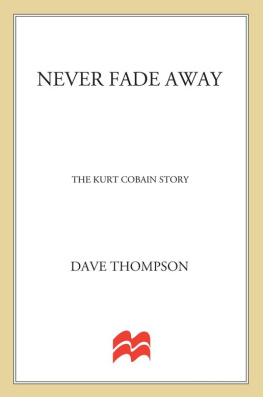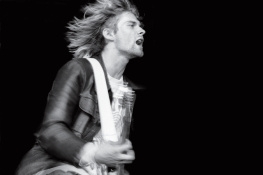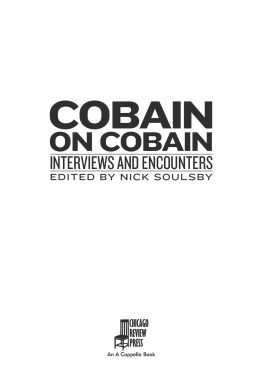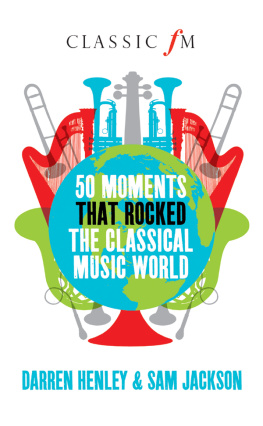scuse me while I kiss the sky
50 moments that changed music
scuse me while I kiss the sky
50 moments that changed music

PAOLO HEWITT

CONTENTS
INTRODUCTION
Rocknroll has no beginning and no end. There are just rivers of creativity, pouring forth, intermingling, generating new sounds and new styles. Blues, jazz, folk, gospel, pop, rock, heavy metal, rap, house, grime, dubstepand more to come.
One of those streams was spotted by Sam Phillips. In the 50s he figured out that if he could just find a hip white guy to sing the blues he would clean up. Then Elvis Presley walked into his studio In later life, Sam would say that the first-ever rocknroll record was Ike Turners Rocket 88. You often see that statement repeated now: rocknroll started with Rocket 88 because Sam says so. Maybe. But what of those gospel and blues tunes that pre-date Ike but carry distinct rocknroll characteristics? Roy Browns Good Rocking Tonight, released in 1947? Or Cadillac Boogie, also from 1947, by the wonderfully named Jimmy Liggins and His Drops of Joy. Like I said, streams within streams.
There were earlier clues that a new music was coming. In December 1946 eight of Americas leading jazz bands gave up. One of those bands was led by Tommy Dorsey. He and his brother Jimmy went on to host TV shows. In January 1956, they introduced Elvis Presley to the nation. The symbolism could not have been more perfect: rocknroll stepped into the spotlight as jazz left the stage.
This happened at a moment of rapid economic growth in America. The nations youth was expected to rise early and work hard and then go home to the wife and kids and domestic bliss. But some found that the prospect of domestic bliss was not to their liking. The rocknroll of people such as Elvis expressed this dissatisfaction. On its arrival kids went crazy. They rioted and they fought and they made out. Rocknroll was fresh and thrilling and sexy and dangerous.
And yet by 1960, the year this book begins, America thought rocknroll was dead. All its major practitionersElvis, Chuck Berry, Jerry Lee Lewis, Little Richardhad found riches or God, or else were languishing in disgrace. Grown-up America breathed a sigh of a relief, but too soon. In Britain, American rocknroll was having a huge impact on teenagers such as John Lennon, Paul McCartney, Pete Townshend, Keith Richards, Ray Davies and Steve Marriott. The same with the arrival of rhythm and blues music in Britain. In fact, in the early 1960s the music that was to become soul took over from rocknroll as the sound of the teenager. Most up-and-coming British musicians in the early 60s wanted to sing like Ray Charles, with the attitude of Elvis. Ironic then that, by the time bands such as The Beatles took their music back to America, Elvis was a light entertainer, exactly the kind of figure rocknroll had set out to destroy.
Seismic changes were also occurring in black music. Many African-American servicemen came back from the Second World War hoping that they would now share in their countrys prosperity. When that hope was disappointed, a defiant entrepreneurial spirit sprang up, expressed through black-owned clubs and record labelsmost notably Berry Gordys Motown. The impact of his records plus the work of artists such as Ray Charles cannot be overestimated. In Britain, throughout the early 60s, black music was the driving force behind all the leading bands from The Beatles onwards. And let us not forget Jamaican mento, which begat ska, which begat reggae, and so brought us Bob Marley.
As the 60s progressed, music moved away from its rocknsoul roots to explore and create other distinct genres such as psychedelia, heavy rock, heavy metal. Again, streams within streams. At first, this music was the force that linked together the youthful, the disenfranchised. Bands were of the people and for the people. In songs and in interviews they stated their desire for freedom. They and their audience didnt want faceless old men telling them what they could wear, listen to or watch.
Yet it was also becoming very apparent that rock music was big business, thus creating a real dichotomy between the performer and the audience. In the 70s the sense of community that drove the idealism of the 60s started to erode. Music became a pursuit of pleasure. It was punk, in the late 70s, that restored rock musics sense of duty to directly challenge the world around it. That gave way to the 80s and a new breed of musicians that made no bones about wanting money and fame. And yet it was this decade that saw Live Aidthe most selfless moment in the history of rock. But in music there is always a reaction. What is dominant one day is replaced by its opposite the next day. Bands such as Primal Scream, Nirvana, Oasis, The Stone Roses and Happy Mondays strove to re-establish rock as rebel music, tied to a lifestyle of defiance.
But rock itself was by this time no longer young. The music had a past, and this book picks up on 50 key moments in its history. The story begins with Elvis and ends with Michael Jackson, two superstars separated by time but not by fate. In between there are moments of absolute genius, moments of true inspiration and outrage, moments of downright stupid behavior, courageous moments, brilliant moments, outlandish moments and moments of true beauty. All life is here, glorified by the light of stardom and the pursuit of great truths. Some of these 50 moments chose themselvesCooke, The Beatles, Woodstock, Hendrix, Cobainothers I personally chose in the hope they would illuminate or simply entertain. I am sure you will have your own 50 favorite moments. These are mine.
Paolo Hewitt
ELVIS PRESLEY
appears on The Frank Sinatra Show
DATE March 26, 1960, Miami Beach

America invented rocknroll, and it might as well have set fire to itself. Rocknroll corrupted a whole generation. It turned polite young men into surly adolescents who smoked and drank and wore their hair funny. The police called them punks. Tame young girls, destined for motherhood and the kitchen, now became sassy and sexy creatures who would blow any house down. We let the devil out, the singer Carl Perkins once said with a wolfish grin.
There were better singers than Elvis PresleyLittle Richard, for example. There were wilder, more dangerous menJerry Lee Lewis. And there were far better songwriters and craftsmenBuddy Holly and Gene Vincent.
But Elvis trumped them because he had the look. Elvis was perfectly built for turning on a generation of girls. He was tall, handsome, continental-looking with his brooding eyes and slicked-back hair. When he danced, he did so without knowing. He was not out to bed his audience with fake moves. He was just himself, swinging his hips, muttering into the microphone, his hair falling over his forehead, his eyes measuring the distance of desire from you to him and back again.
Elvis was like no other. When he walked on stage the girls could not help themselves. They screamed and they rushed toward him and when they couldnt get to him, they rioted. They damaged concert venues and invaded hotels, acted in ways America had not seen. Elvis got to the boys as well. He was their size, their look. It was the perfect formula. Girls wanted to bed him, boys wanted to be him. Jackpot. For two years, everywhere he went, mayhem, craziness, disturbed behavior. And then the squares hit back.
Next page

